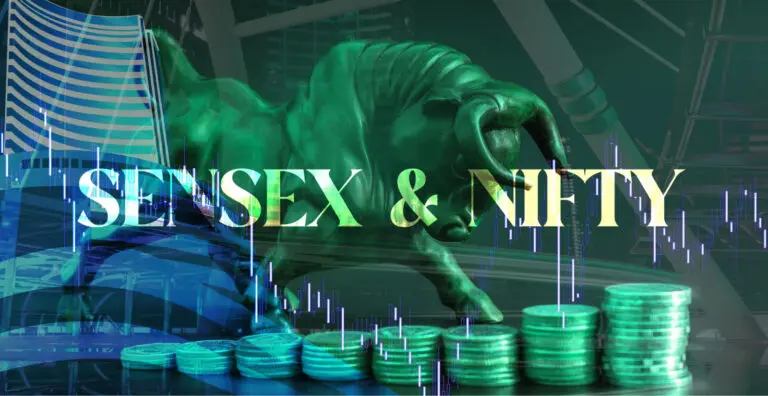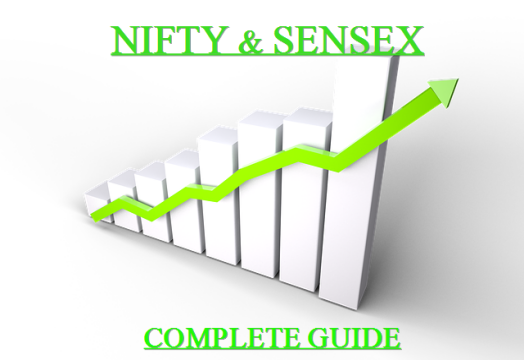1. Introduction to Stock Markets
Stock markets are the backbone of a nation’s economic framework, acting as platforms where companies raise capital and investors grow wealth. In India, the Bombay Stock Exchange (BSE) and the National Stock Exchange (NSE) dominate equity trading. These exchanges host indices like the Sensex and Nifty, which serve as barometers of market sentiment and economic health.
The Indian stock market has evolved from open-outcry trading in the 19th century to a digitized, trillion-dollar ecosystem. Today, over 7,000 companies are listed across BSE and NSE, attracting domestic and global investors. Indices like Sensex and Nifty simplify market analysis by tracking top-performing stocks, offering insights into trends, sectoral performance, and macroeconomic shifts.
This article explores the intricacies of Sensex and Nifty, their impact on India’s financial landscape, and strategies to navigate this dynamic domain.
2. Understanding Sensex: The Pulse of BSE
Sensex, short for the Sensitive Index, was launched in 1986 by the BSE. It comprises 30 of India’s largest and most liquid companies across sectors like banking, IT, energy, and consumer goods.
Historical Context
- Base Year: 1978–79 (base value: 100).
- Objective: To reflect market movements and investor confidence.
- Top Constituents (2023): Reliance Industries, HDFC Bank, Infosys, and ICICI Bank.
Selection Criteria
- Market Capitalization: Companies must rank among the top 100 by market cap.
- Liquidity: High trading frequency and free-float availability.
- Revenue Diversification: Firms must derive significant revenue from India.
Sensex is a free-float market capitalization-weighted index, meaning larger companies exert more influence. For instance, Reliance Industries alone accounts for ~12% of the index.
3. Nifty 50: The Benchmark of NSE
The Nifty 50, managed by NSE Indices Limited (a subsidiary of NSE), was introduced in 1996. It represents 50 companies from diverse sectors, offering broader market representation than Sensex.
Key Features
- Base Year: 1995 (base value: 1,000).
- Calculation: Free-float market cap-weighted methodology.
- Top Constituents (2023): HDFC Bank, Reliance, TCS, and ITC.
Why Nifty Matters
- Global Recognition: Nifty derivatives are traded on international exchanges like SGX.
- Sectoral Balance: Represents 13 sectors, including emerging industries like renewables and fintech.
4. Key Differences Between Sensex and Nifty
| Parameter | Sensex | Nifty |
|---|---|---|
| Number of Stocks | 30 | 50 |
| Exchange | BSE | NSE |
| Launch Year | 1986 | 1996 |
| Diversification | Focused on blue-chip stability | Broader sectoral representation |
| Global Use | Less prevalent in derivatives | Widely used in global derivatives |
5. How Are Sensex and Nifty Calculated?

Both indices use the free-float market capitalization method:
- Free-Float Adjustment: Excludes locked-in shares (e.g., promoter holdings).
- Market Cap Calculation: Multiply share price by outstanding shares.
- Index Value: Aggregated market cap of constituents divided by a base value.
Example:
If the combined free-float market cap of Sensex stocks is ₹100 trillion and the base value is ₹10,000 crore, the index value = (100,00,000 crore / 10,000 crore) × 100 = 100,000.
6. Factors Influencing Sensex and Nifty
Macroeconomic Indicators
- GDP growth, inflation (CPI), and interest rates (set by RBI).
- Example: A 0.5% repo rate hike can trigger sell-offs in rate-sensitive sectors (e.g., real estate).
Global Trends
- Foreign Institutional Investor (FII) flows, geopolitical tensions, and crude oil prices.
- The 2022 Russia-Ukraine war caused Nifty to drop 10% in a month.
Corporate Earnings
- Quarterly results, mergers, and governance scandals.
- Infosys’ 2021 stock surge after reporting 19% revenue growth.
Policy Changes
- GST revisions, FDI reforms, and budget announcements.
7. The Role of Indices in India’s Economy
- Investor Confidence: Rising indices attract foreign capital.
- Economic Health: A growing Sensex signals industrial expansion and job creation.
- Policy Formulation: Governments use index trends to design fiscal measures.
8. Investing Strategies Linked to Sensex and Nifty

- Index Funds & ETFs: Passive funds mirroring index composition (e.g., Nippon India Nifty 50 ETF).
- SIPs in Index Funds: Regular investments to average out volatility.
- Derivatives Trading: Nifty futures and options for hedging/speculation.
Case Study:
A ₹10,000 monthly SIP in a Nifty index fund since 2010 would have grown to ~₹50 lakh by 2023 (20% CAGR).
9. Challenges and Risks in Tracking Market Indices
- Overconcentration Risk: Top 5 Sensex stocks account for 40% of its weight.
- Volatility: Events like COVID-19 caused a 35% crash in March 2020.
- Limitations: Indices exclude SMEs, which represent 45% of India’s industrial output.
10. The Future of Indian Stock Markets
- Tech-Driven Trading: AI and blockchain for faster settlements.
- ESG Investing: Nifty100 ESG Index gaining traction.
- Retail Boom: 14 million new Demat accounts opened in 2022.
11. Conclusion
Sensex and Nifty are more than numbers—they encapsulate India’s economic journey. While they offer lucrative opportunities, investors must balance optimism with due diligence. As India targets a $5 trillion economy, these indices will remain central to its growth story, adapting to innovations and global integrations.
By understanding their mechanics, risks, and strategic potential, investors can harness the power of the stock market to build lasting wealth.
More Read: PBKS vs RCB IPL 2025: Clash of Titans in Match 37 – Toss, Teams, Best Live Streaming, and More
News Site: News9 india
